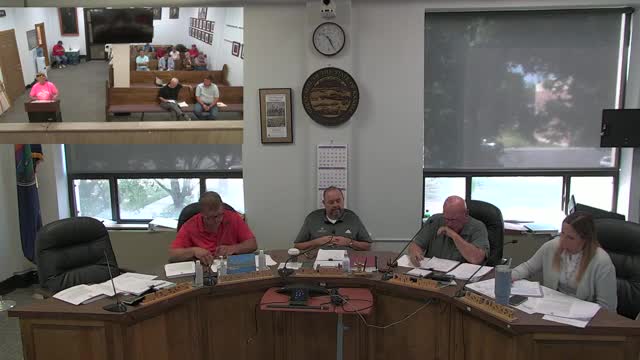Federal plan aims for 100% solar and wind by 2050
August 30, 2024 | Crawford County, Kansas
This article was created by AI summarizing key points discussed. AI makes mistakes, so for full details and context, please refer to the video of the full meeting. Please report any errors so we can fix them. Report an error »

In a recent government meeting, discussions centered around the future of renewable energy in the United States, particularly focusing on solar and wind power. A representative highlighted the federal government's ambitious goal of achieving 100% reliance on solar and wind energy by 2050, noting that significant progress has already been made. In the first five months of this year, wind and solar energy production surpassed that of coal-fired plants, marking a pivotal shift in the energy landscape.
The conversation also touched on local zoning regulations related to renewable energy projects. The representative referenced a successful two-year planning process in Douglas County, which culminated in the approval of an 1,100-acre solar farm, with 600 acres dedicated to solar panels. This example was presented as a model for other regions to follow, emphasizing the importance of adhering to established guidelines and regulations.
Concerns were raised about compliance with zoning requirements, particularly regarding the types of fencing needed around solar farms. The representative pointed out that existing fences in some areas do not meet federal standards, which require barriers that allow small animals to pass through easily.
The meeting concluded with a call for further inquiries into property value impacts surrounding renewable energy installations, as well as a suggestion to consult with experts who have navigated similar zoning processes. The representative underscored the need for thorough public engagement, referencing an extensive eight-hour public hearing that Douglas County held before finalizing their solar farm plans.
The conversation also touched on local zoning regulations related to renewable energy projects. The representative referenced a successful two-year planning process in Douglas County, which culminated in the approval of an 1,100-acre solar farm, with 600 acres dedicated to solar panels. This example was presented as a model for other regions to follow, emphasizing the importance of adhering to established guidelines and regulations.
Concerns were raised about compliance with zoning requirements, particularly regarding the types of fencing needed around solar farms. The representative pointed out that existing fences in some areas do not meet federal standards, which require barriers that allow small animals to pass through easily.
The meeting concluded with a call for further inquiries into property value impacts surrounding renewable energy installations, as well as a suggestion to consult with experts who have navigated similar zoning processes. The representative underscored the need for thorough public engagement, referencing an extensive eight-hour public hearing that Douglas County held before finalizing their solar farm plans.
View full meeting
This article is based on a recent meeting—watch the full video and explore the complete transcript for deeper insights into the discussion.
View full meeting
